Another Long Life Model


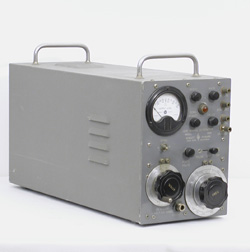 |
HP 610B VHF Generator
|
The first appearance of an RF generator was in the 19-A, 1948 catalog page 20. The 610A is a general purpose UHF generator covering 500 to 1350 Mc.
The 610A includes a high frequency oscillator, and an attenuator for accurately controlling output voltages from 0.1 microvolt to 0.1 volt into a 50 ohms load with a + / - 1 dB accuracy over the entire range. Also included is an internal pulser and modulator. The oscillator employed is of the concentric type, adjusted by positioning of the shorting plungers in the concentric lines.
The 610A would be replaced by the 610B ( left picture) in the 20-A, 1950 catalog. The 610B having a slightly different frequency coverage of 450 to 1,200 Mc.
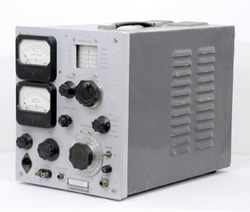 |
The HP 608B
|
The 608A was introduced in the 1950 catalog page 40. It was the first model of one of HP's long lifetime products. The 608 in its last version, the 608E would be produced until 1981.
The 608A covers from 10 to 500 Mc in 5 bands and delivers 0.1 microvolt to 1 volt continuously variable by the means of a direct reading piston attenuator calibrated in voltages and dBm. The frequency is displayed by a 7 inch diameter drum tuning dial, calibrated to provide an individual scale length of more than 16 inches or an overall scale lengh of about 7 feet for the five frequency bands.
The four pages of the March 1950, Hewlett Packard Journal Volume 1, Nbr. 7 would be fully dedicated to the 608A description.
| Front page of March 1950 Hewlet Packard Journal - Copy by permission of the Hewlett Packard Company |
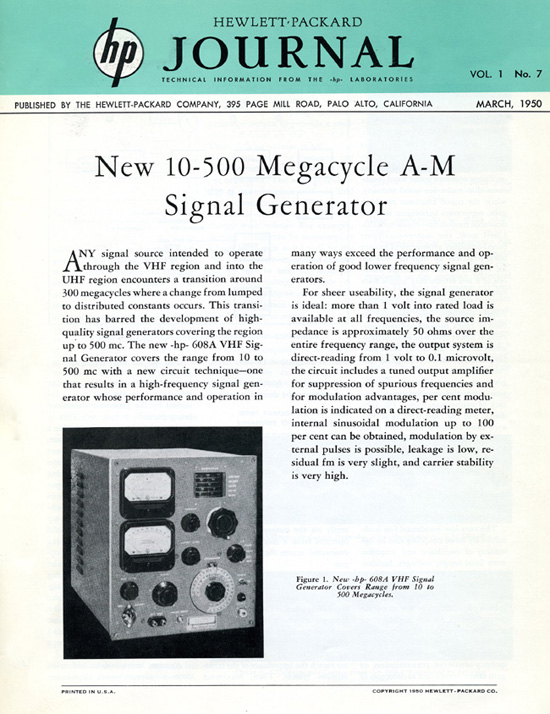 |
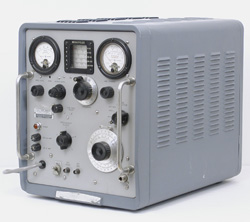 |
The HP 608C
|
This is the title of the August 1954, Volume 5, Number 12 Hewlett-Packard Journal which introduced the new models 608C and 608D signal generators.
The frequency coverage is 10 to 480 Mc for the 608C and 10 to 420 Mc for the 608D. Major reduction of residual FM is obtained by inserting an untuned buffer amplifier between the 5675 pencil triode Colpitts oscillator and the tuned output amplifier on the model 608D. Filament regulation stabilizes oscillator and amplifier against line voltage change and contributes to low residual frequency modulation. Another important improvement in the frequency accuracy was obtained by adding a crystal calibrator which provided frequency check points every 5 Mc over the range of the instrument.
Fifty years after it was launched, it is surprising to note that the 608 is still used in benches as a high level spurious generator in order to evaluate high dynamic range receivers for linearity measurements such as cross modulation or desensitisation. Actually its high level vacuum tube resonant circuit oscillator gives it a very low phase noise (for medium range frequency offsets around one hundred kHz). This achievement remains spectacular, even when compared with a high performance generator like the 8642A, for example.
| HP 606A Add in the ELECTRONICS Magazine - Page 24, January 16, 1959 |
 |
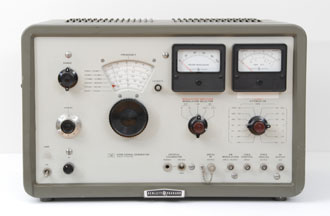 |
HP 606B VHF Generator
|
Another RF Generator designed by Arthur Fong(*) was introduced in the 1958 catalog, it was described in the April 1959 edition of the Hewlett Packard Journal:
"To make available in a low-rf to vhf range signal generator the precision and convenience that the present state of the arts permits, a new 50 kilocycle to 65 megacycle a-m signal generator having significantly enhanced performance characteristics has been developed. The enhancement extends to all three of the areas (carrier, modulation and output control) that define and classify a signal generator."
The HP 606A was announced as a new instrument in the January 1959 edition of the ELECTRONICS Magazine (a scan of the add is shown above). It was replaced by the HP 606B in 1967, and stayed in the catalog up to 1981.
(*) Arthur Fong Memoirs are online on this Website Here.
| The last HP 606 was celebrated in the Stanford Park Division Newsletter on October 1981 |
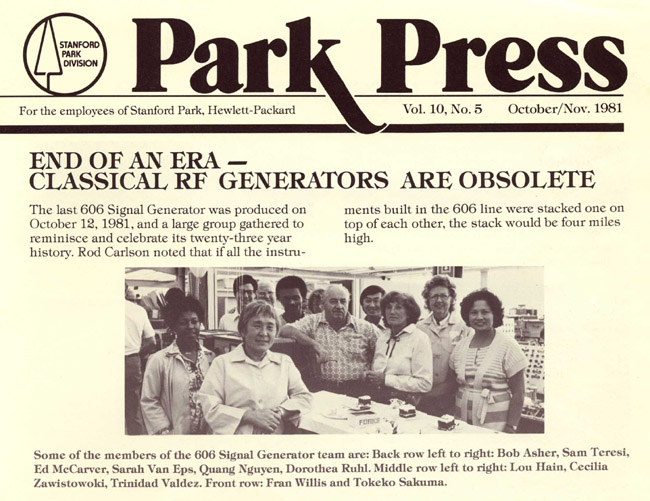 |
Animation 1 |
 |
Inside View of the HP 606B |